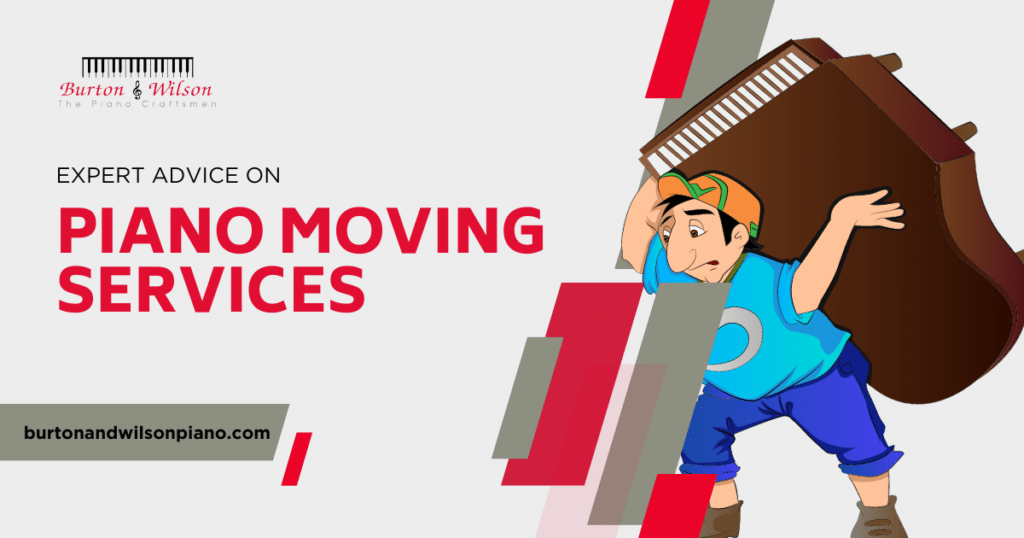Pianos hold an iconic place in music’s world of elegance and timeless melodies, yet moving one is a challenging task – requiring intricate choreography, precise execution, and attention to every detail. Whether you are a professional piano moving or simply taking up this daunting challenge at home, this article offers invaluable advice from expert piano movers on safely moving a piano.
Reasons Why Moving a Piano Requires Special Care
Pianos come in all forms and sizes, from uprights to grand pianos, and contain delicate components, including strings, hammers, and keys, which can become damaged easily during transportation. That is why piano moving can be such a tedious endeavour:
- Weight and Size: Pianos can weigh between 300 and 1,500 pounds and need special tools and techniques to move around safely.
- Delicate Components: A piano’s internal components can be light and affected by temperature, humidity, and shock changes; any mishandling could damage its inner workings.
- Tuning: After moving a piano, its tuning must be appropriately tuned as transport vibrations can lead to discrepancies that necessitate adjustments after delivery.
- Cosmetic Vulnerabilities: Pianos can contain delicate woodwork and finishes that may become scratched if handled carelessly, leaving their surfaces vulnerable to being struck by accidental knocks or dropped weight. To reduce risk and ensure long-term appearances.
Proper Piano Moving Practice is Essential
Pianos are delicate instruments with thousands of individual parts working in concert to produce musical notes. However, without proper care during transportation or moving operations they could suffer damage that requires costly repairs – or worse still could make the piano unplayable altogether – thus understanding how best to transport pianos is essential.
1. Hire Professionals
For effective piano moving services in any size or shape, piano moving service is best left in the hands of specialists with expert knowledge in handling each piano size safely and securely during transit. Check reviews online about local moving companies before hiring them to ensure their credentials and reviews meet your standards for excellence.
2. Assess Your Piano
Before moving a piano, it is crucial that its size and weight be accurately evaluated. Grand pianos typically weigh significantly more than upright models. Knowing their dimensions lets you plan what equipment and personnel may be needed to transport them safely.
3. Gather Equipment Required for Success
Piano moving requires special tools, including piano dollies, straps, blankets, and ramps designed to protect both the piano and those moving it. Be sure to have these available before hiring professional movers, or verify if their services include them in their package.
4. Plan the Route
Before moving a piano in your home, carefully map its route. Clear away all furniture and rugs so there is a clear pathway. Ensure doorways are wide enough for their passage without obstructions such as furniture.
5. Safeguard the Piano
To safeguard against scratches and dings during transport, secure moving blankets/pads around the piano with moving straps so they stay put during their travels. This also keeps them from shifting while being transported.
6. Adopt Proper Lifting Techniques
Whether it is professional moving services or homeowners, using proper lifting techniques for piano movement is critical to avoid injury and make your move safer. More substantial pianos may need multiple people to help lift and transport them safely.
7. Share and Coordinate
Communication is of utmost importance during any piano move. If working with a team of movers, ensure clear signals and actions are coordinated to guarantee an efficient transition process. For homeowners moving their piano with help from friends or relatives, ensure everyone understands their roles and responsibilities clearly.
8. Protect Your Piano Legs
Piano legs can be fragile and subject to damage during transport; to keep them protected while moving, use padded leg covers or socks and prevent scratches to your flooring surface from happening. This also serves to avoid potential accidents occurring.
9. Take Your Time
Piano moving should always take time and effort; taking time is vital to ensure safe transportation and delivery.
10. Tune The Piano After Moving
Even with our best care and consideration during transportation, a piano’s tuning may still become impaired during relocation due to fluctuations in temperature and humidity levels. Therefore, after moving, it is vitally important that its tuning be assessed by a professional to restore its impeccable sound quality.
11. Cost and Considerations Professional
Piano moving services may appear costly, but they represent an investment to safeguard your instrument. Their expenses depend on various factors, including piano size and distance required to move and any additional services like disassembly/reassembly services if applicable.
Final Words
Consider professional piano moving services when considering your options; paying professional services will prove more cost-effective than dealing with potential damage and repair bills from improper handling during an inexperienced move.
Relocating a piano may seem challenging, but with proper knowledge and assistance from professionals, you can ensure its safe transport. Prioritize proper piano handling regardless of destination to preserve its beauty and musicality!
Burton and Wilson Piano Moving provides professional piano moving services with years of experience and dedication to excellence, guaranteeing your piano is safe during transport. Visit us today at https://burtonandwilsonpiano.com/ to discover our services or schedule your piano move – let us handle its care so you can focus on creating music!

